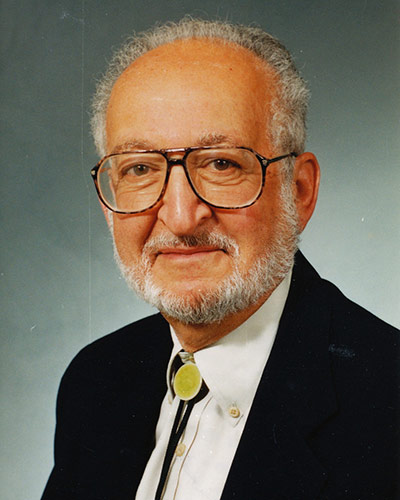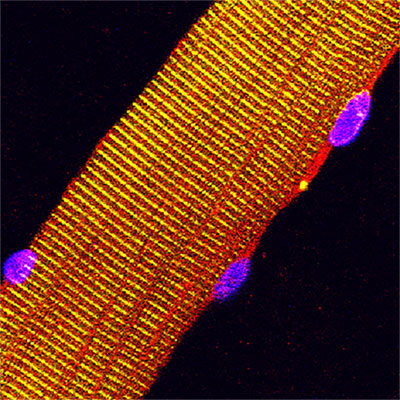May 21, 2019

The Department of Physiology regrets to inform you of the passing of Emeritus Professor, Dr. Edmund Glaser, on May 16, 2019. Dr. Glaser was a professor in the Department of Physiology of the University of Maryland School of Medicine from 1972 until his retirement in 1995.
Dr. Glaser started his college education in Electrical Engineering at the Cooper Union in his hometown of New York City. In the midst of his college career, he was drafted and served in the US Army in WWII. His duty took him to Nuremberg where he was a motion picture sound photographer during the Medical War Trials of the infamous German Nazi physicians. After his military service, he completed his Bachelors’ degree in 1949. After doing early project work in communications systems and guided missiles for the Air Force, he soon became attracted to the new fields of computers, information theory, and artificial intelligence. In 1952, he returned to academic studies in Engineering. He received a PhD from Johns Hopkins University in 1960 and then secured a postdoctoral fellowship in its Department of Physiology in the School of Medicine.
In 1963 Dr. Glaser teamed up with Dr. Hendrik Van der Loos, a neuroanatomist at Johns Hopkins to study the complex morphology of the brain’s cerebral cortex. They encountered the shortcomings of the then current neuroanatomical techniques and the need to revamp the prevailing tedious methods of analyzing neuron morphology and neuron networks within the cerebral cortex. It was there they formulated the design and the construction of the first computer microscope.

Glaser and Van der Loos coined the term “computer microscopy" at a time when analog computers were still popular, and digital computers were a rarity ‐ monster‐like in size and snail‐like in speed. The further development of computer microscopy and its gradual adoption by anatomists took place over an interval of more than twenty years. Digital technology was eventually accepted and Glaser went on to invent the Image Combining Computer microscope that combined all the aspects of computer microscopy in a single instrument, which he subsequently patented in the US. In the 1980s Dr. Glaser formed the corporation MicroBrightField with his son, Jack Glaser. Their microscope system, named Neurolucida, became known for its ability to significantly enhance neuroanatomical research. In the ensuing years more than 1000 Neurolucida systems have been acquired by various neuroscience organizations throughout the world and use of the system has been documented in 10’s of thousands of published papers.
Glaser Prize in Imaging Website
About the University of Maryland School of Medicine
Now in its third century, the University of Maryland School of Medicine was chartered in 1807 as the first public medical school in the United States. It continues today as one of the fastest growing, top-tier biomedical research enterprises in the world -- with 43 academic departments, centers, institutes, and programs; and a faculty of more than 3,000 physicians, scientists, and allied health professionals, including members of the National Academy of Medicine and the National Academy of Sciences, and a distinguished recipient of the Albert E. Lasker Award in Medical Research. With an operating budget of more than $1 billion, the School of Medicine works closely in partnership with the University of Maryland Medical Center and Medical System to provide research-intensive, academic and clinically based care for more than 1.2 million patients each year. The School has over 2,500 students, residents, and fellows, and more than $530 million in extramural funding, with most of its academic departments highly ranked among all medical schools in the nation in research funding. As one of the seven professional schools that make up the University of Maryland, Baltimore campus, the School of Medicine has a total workforce of nearly 7,000 individuals. The combined School and Medical System (“University of Maryland Medicine”) has an annual budget of nearly $6 billion and an economic impact more than $15 billion on the state and local community. The School of Medicine faculty, which ranks as the 8th highest among public medical schools in research productivity, is an innovator in translational medicine, with 600 active patents and 24 start-up companies. The School works locally, nationally, and globally, with research and treatment facilities in 36 countries around the world. Visit medschool.umaryland.edu
Contact
Office of Public Affairs
655 West Baltimore Street
Bressler Research Building 14-002
Baltimore, Maryland 21201-1559
Contact Media Relations
(410) 706-5260
Related stories

Tuesday, July 26, 2022
Longstanding Brain Scientist and Neurosurgeon, J. Marc Simard, MD, PhD, Named Interim Chair of UM School of Medicine’s Department of Physiology
University of Maryland School of Medicine Dean E. Albert Reece, MD, PhD, MBA, announced that leading Physician-Scientist and Neurosurgeon, J. Marc Simard, MD, PhD, the Dr. Bizhan Aarabi Professor in Neurotrauma, and Professor of Neurosurgery, Pathology, and Physiology at the University of Maryland School of Medicine, has been appointed to serve as Interim Chair of the Department of Physiology.
